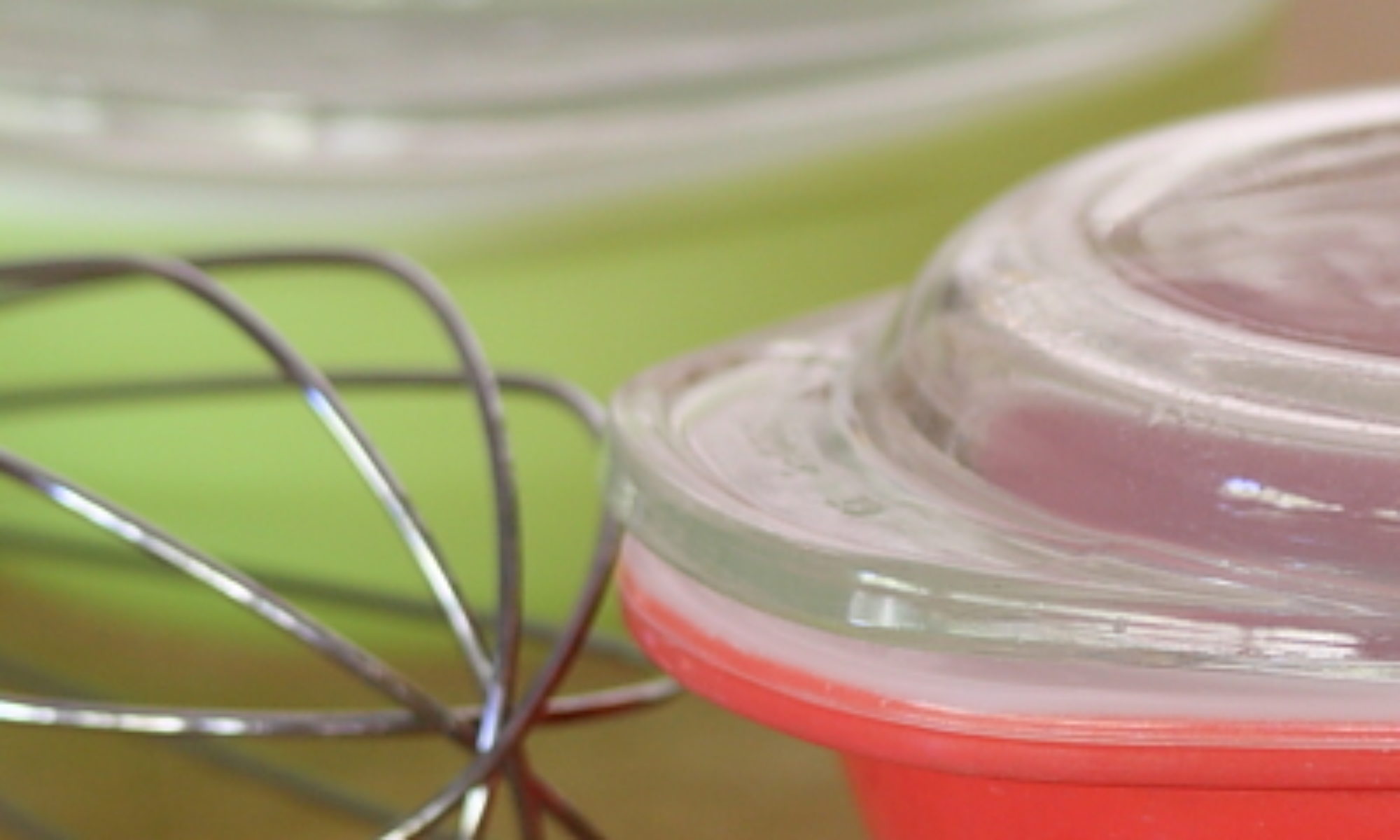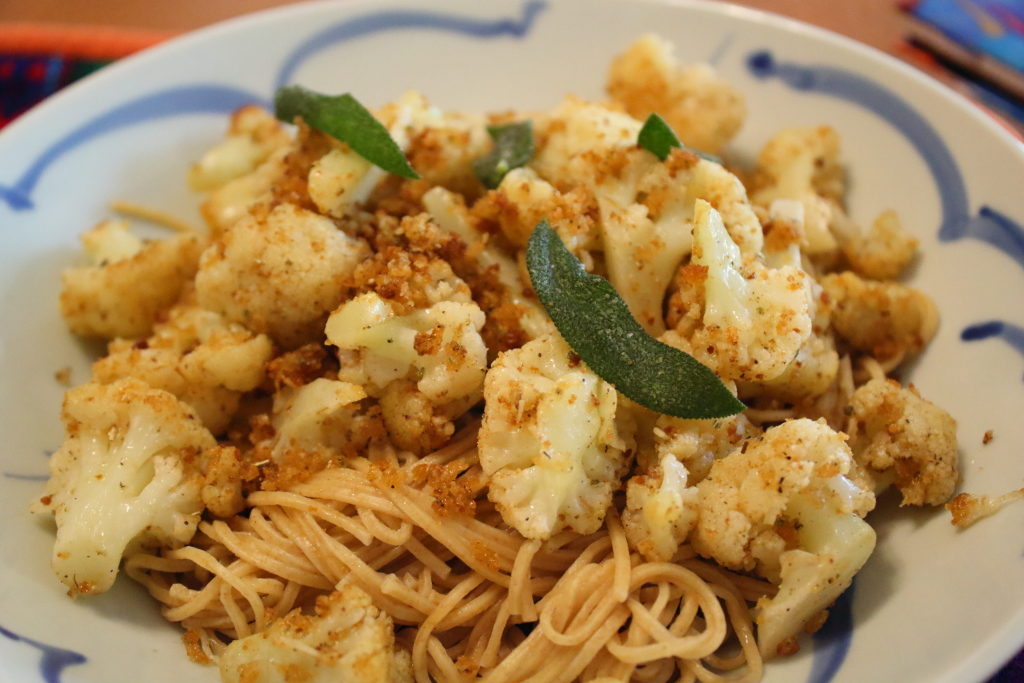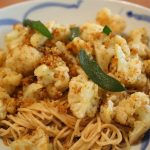
We took this dish and turned it into a full meal by serving it on top of some fresh, 50% spelt pasta (just make fresh pasta with 50% spelt flour, or any whole-wheat flour if you don’t have spelt), but we think that this will also work just fine as a side dish by leaving out the pasta. And, while we made some crispy sage leaves for an extra topping, you could leave those off, too. It just depends on how much scartchin’ you want to do.
We thought up this dish one night as we were drifting off to sleep. We had about half a head of cauliflower in the fridge, had just turned some stale crusts of bread into crumbs, and, in that period of time just before we dozed off, we figured we could combine the two. Usually, that might involve baking, but, with the heat we’ve been having, this was relegated to the stove top. So, if you like it, you can thank the crack staff here at Scratchin’ It central.
Sage Cauliflower with Crispy Bread Crumbs
Ingredients
- 1 Tbs kosher salt
- 1 tsp white wine vinegar
- 1/2 head cauliflower, cut into 1-inch florets
- 4 Tbs unsalted butter
- 8 fresh sage leaves
- 3 Tbs bread crumbs
- 1 tsp dried sage
- kosher salt
- freshly ground black pepper
Instructions
- Bring a large kettle of water to a boil over high heat. Stir in salt and vinegar. Add cauliflower and boil for 3 minutes, then drain and set aside.
- Melt butter in a large skillet over medium heat. When melted, add sage leaves and fry until bubbling ceases and butter is lightly browned.
- Transfer sage leaves to a paper towel to drain and sprinkle lightly with salt.
- Add cauliflower to the browned butter and cook until cauliflower begins to brown in spots, about 5 minutes. Add bread crumbs and dried sage, stir, and continue to cook until bread crumbs are crispy. Season to taste with salt and pepper.
- Serve topped with reserved crispy sage leaves.
Ingredient discussion:
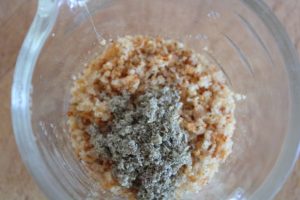
Frying the sage leaves in butter imparts a nice sage-y taste, so we strongly recommend it. That said, we understand if you don’t have fresh sage leaves. If that’s the case, you should still brown the butter, just without the sage leaves. Browned butter tastes delicious. For the bread crumbs, we scratch up our own by simply grinding up bits of stale-ish bread in a blender. Then, we pop them into the freezer so they’ll keep. If you’re wondering about the vinegar, it’s there to help keep the cauliflower white. No other reason.
Procedure in detail:
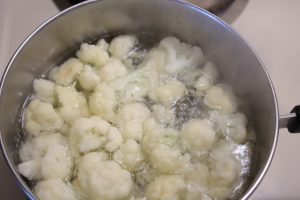
Blanch cauliflower. We like to blanch the cauliflower first so it’ll be tender all the way through. Cauliflower is pretty hard to overcook, so you don’t have to worry too much about timing here. However, crunchy bits of raw cauliflower are disconcerting in a hot dish, so, don’t skip blanching. Simply bring a large kettle of water to a full boil, add the salt and vinegar, then add the cauliflower florets. Once it comes back to a boil, drain the cauliflower in a colander. If you’re going to try this with pasta, use a slotted spoon to scoop out the cauliflower and use the blanching water to cook the pasta when the time comes.
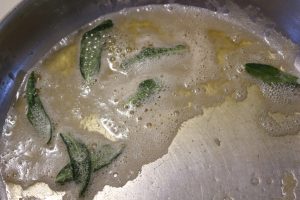
Fry sage leaves (or brown butter). Making crispy fried sage leaves is pretty easy, and they work just like a timer for browning butter. Melt the butter in a large skillet and add the sage leaves. They’ll sizzle and bubble; swish around the pan to keep the leaves covered in butter, and continue frying until they stop bubbling. Now all the water has been fried off, and, what do you know, the butter is perfectly browned. See, a sage leaf timer. Cool!
Drain sage leaves. Lift the sage leaves out with a fork and place on a paper towel to drain. Be careful, as the sage leaves are brittle and you want to leave them whole. Once they’re all scooped out, sprinkle them with a bit of salt. (We use popcorn salt since it’s extremely fine, and, yes, we make that ourselves by grinding kosher or sea salt in a small spice grinder).
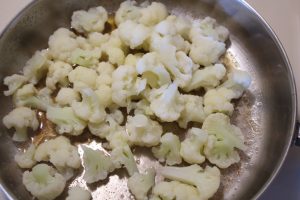
Fry cauliflower. While the butter is still nice and hot, dump in the cauliflower. It’ll spit and spatter, so be careful. Shake the pan into a even layer and fry the cauliflower until it browns in a few spots, shaking the pan a few times to brown different areas of the florets.
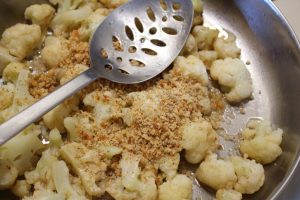
Coat with crumbs. Once the cauliflower is browned here and there, stir in the bread crumbs and the dried sage and continue frying, stirring occasionally, until the breadcrumbs brown nicely and crisp up. Taste and season with salt and pepper.
Serve. Divide the cauliflower between bowls and serve topped with a couple of those crispy sage leaves.
As we said above, we turned this from a side dish to a main dish, simply by serving on top of pasta. The browned butter seeps into the pasta, and who doesn’t like buttery pasta? Even without the pasta, the cauliflower is very good, with a crispy texture from the breadcrumbs, contrasting nicely with the tender cauliflower pieces. The sage adds a nice flavor, and those fried sage leaves on top are one of our favorites (once we found out how easy it is to make crispy fried sage leaves we make them as soon as our sage plant has enough leaves, then we figure out something to have with them). For something this quick and easy, this is a five star dish.
